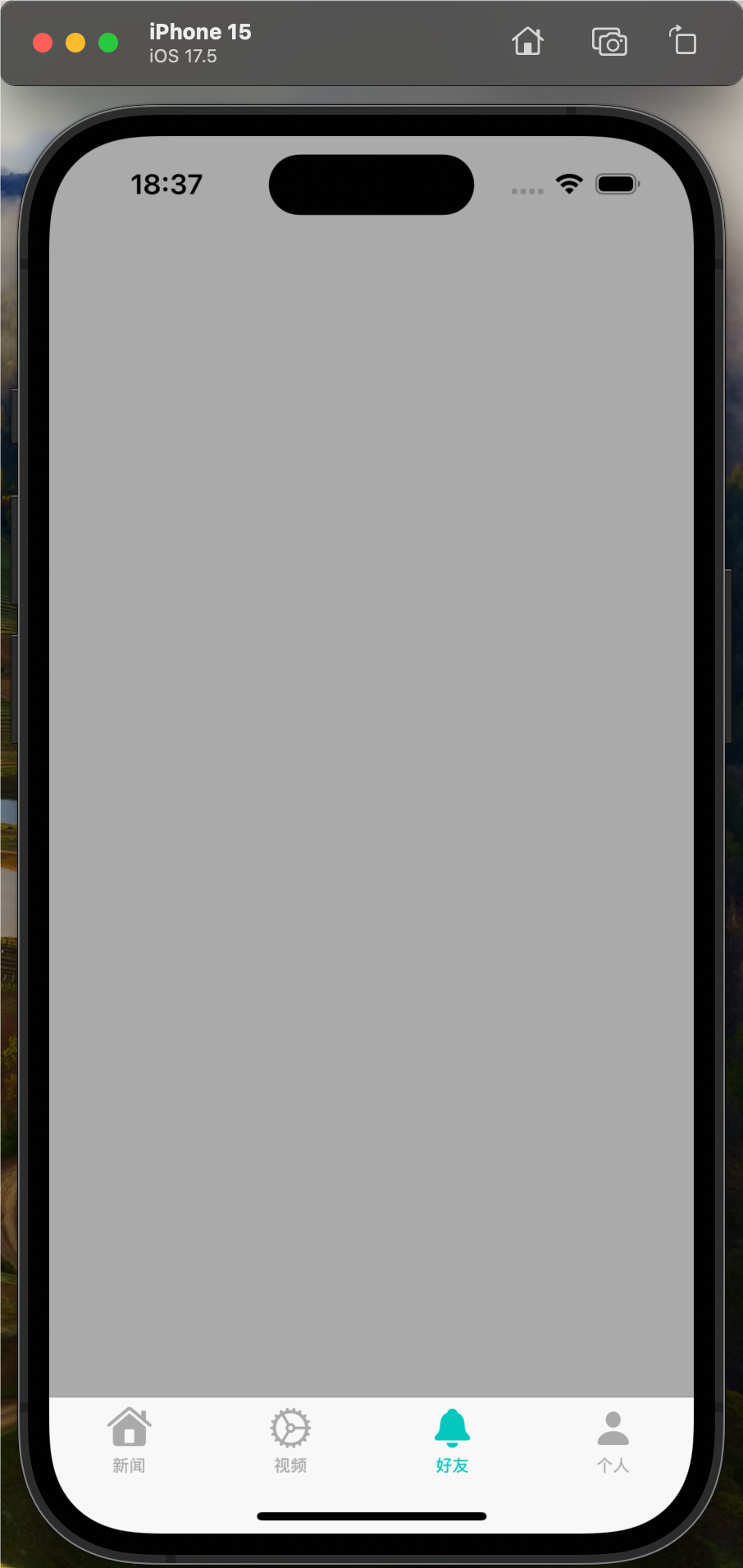我喜欢ipad上tableView的新分组背景颜色.我想在我的分割控制器右侧的UIViewController的背景上使用相同的颜色.
有谁知道这种颜色是什么?它似乎是一个轻微的梯度.
解决方法
根据Lutz的答案和
this question的答案,以下自定义视图控制器代码创建表视图的背景视图的副本.但是,自动旋转存在问题,这将在下面的第二个代码片段中解决.
// You also need to link against QuartzCore.framework
#import <QuartzCore/QuartzCore.h>
- (void) loadView
{
CGRect mainViewFrame = [self mainViewFrame];
self.view = [[[UIView alloc] initWithFrame:mainViewFrame] autorelease];
CAGradientLayer* gradient = [CAGradientLayer layer];
gradient.frame = self.view.bounds;
UIColor* startColor = [UIColor colorWithRed:226.0/255.0 green:229.0/255.0 blue:234.0/255.0 alpha:1.0];
UIColor* endColor = [UIColor colorWithRed:208.0/255.0 green:210.0/255.0 blue:216.0/255.0 alpha:1.0];
// Cast to (id) is necessary to get rid of a compiler warning
gradient.colors = [NSArray arrayWithObjects:(id)startColor.CGColor,(id)endColor.CGColor,nil];
// Inserting at index position 0 ensures that the gradient is drawn
// in the background even if the view already has subviews or other
// sublayers
[view.layer insertSublayer:gradient atIndex:0];
// add more subviews
}
- (CGRect) mainViewFrame
{
// add your frame calculating code here
}
- (void) willAnimateRotationToInterfaceOrientation:(UIInterfaceOrientation)interfaceOrientation duration:(NSTimeInterval)duration
{
[UIView animateWithDuration:duration
delay:0
options:UIViewAnimationCurveLinear
animations:^{
((CALayer*)[self.view.layer.sublayers objectAtIndex:0]).frame = self.view.bounds;
}
completion:NULL];
}
上述代码的问题在于,当旋转动画运行时,原始白色背景可以在很短的时间内看到.不幸的是我对层的解释不够,所以我开始寻找CAGradientLayer的替代品.我发现了用梯度图像设置CALayer.contents.
下面的大多数代码都涉及创建作为便利构造函数的输入所需的模式图像,只有这次使用Core Graphics而不是使用CAGradientLayer“手动”绘制渐变.顺便提一下,梯度绘图代码主要基于Ray Wenderlich的Core Graphics 101 tutorial.
#import <QuartzCore/QuartzCore.h>
- (void) loadView
{
CGRect mainViewFrame = [self mainViewFrame];
self.view = [[[UIView alloc] initWithFrame:mainViewFrame] autorelease];
UIColor* startColor = [UIColor colorWithRed:226.0/255.0 green:229.0/255.0 blue:234.0/255.0 alpha:1.0];
UIColor* endColor = [UIColor colorWithRed:208.0/255.0 green:210.0/255.0 blue:216.0/255.0 alpha:1.0];
UIImage* backgroundPattern = [self gradientimageWithSize:CGSizeMake(1,mainViewFrame.size.height)
startColor:startColor
endColor:endColor];
self.view.layer.contents = (id)backgroundPattern.CGImage;
// add more subviews
}
- (CGRect) mainViewFrame
{
// add your frame calculating code here
}
- (UIImage*) gradientimageWithSize:(CGSize)size startColor:(UIColor*)startColor endColor:(UIColor*)endColor
{
UIGraphicsBeginImageContext(size);
CGContextRef context = UIGraphicsGetCurrentContext();
CGRect rect = CGRectMake(0,size.width,size.height);
[self drawLinearGradientWithContext:context rect:rect startColor:startColor.CGColor endColor:endColor.CGColor];
UIImage* gradientimage = UIGraphicsGetimageFromCurrentimageContext();
UIGraphicsEndImageContext();
return gradientimage;
}
- (void) drawLinearGradientWithContext:(CGContextRef)context rect:(CGRect)rect startColor:(CGColorRef)startColor endColor:(CGColorRef)endColor
{
CGColorSpaceRef colorSpace = CGColorSpaceCreateDeviceRGB();
CGFloat locations[] = { 0.0,1.0 };
NSArray* colors = [NSArray arrayWithObjects:(id)startColor,(id)endColor,nil];
// NSArray is toll-free bridged,so we can simply cast to CGArrayRef
CGGradientRef gradient = CGGradientCreateWithColors(colorSpace,(CFArrayRef)colors,locations);
// Draw the gradient from top-middle to bottom-middle
CGPoint startPoint = CGPointMake(CGRectGetMidX(rect),CGRectGetMinY(rect));
CGPoint endPoint = CGPointMake(CGRectGetMidX(rect),CGRectGetMaxY(rect));
// Remember context so that later on we can undo the clipping we are going to
// add to the Core Graphics state machine
CGContextSaveGState(context);
// Add clipping with the specified rect so that we can simply draw into the
// specified context without changing anything outside of the rect. With this
// approach,the caller can give us a context that already has other stuff
// in it
CGContextAddRect(context,rect);
CGContextClip(context);
// Finally draw the gradient
CGContextDrawLinearGradient(context,gradient,startPoint,endPoint,0);
// Undo clipping
CGContextRestoreGState(context);
// Cleanup memory allocated by CGContextDrawLinearGradient()
CGGradientRelease(gradient);
// Cleanup memory allocated by CGColorSpaceCreateDeviceRGB()
CGColorSpaceRelease(colorSpace);
}
我最喜欢这段代码,因为

